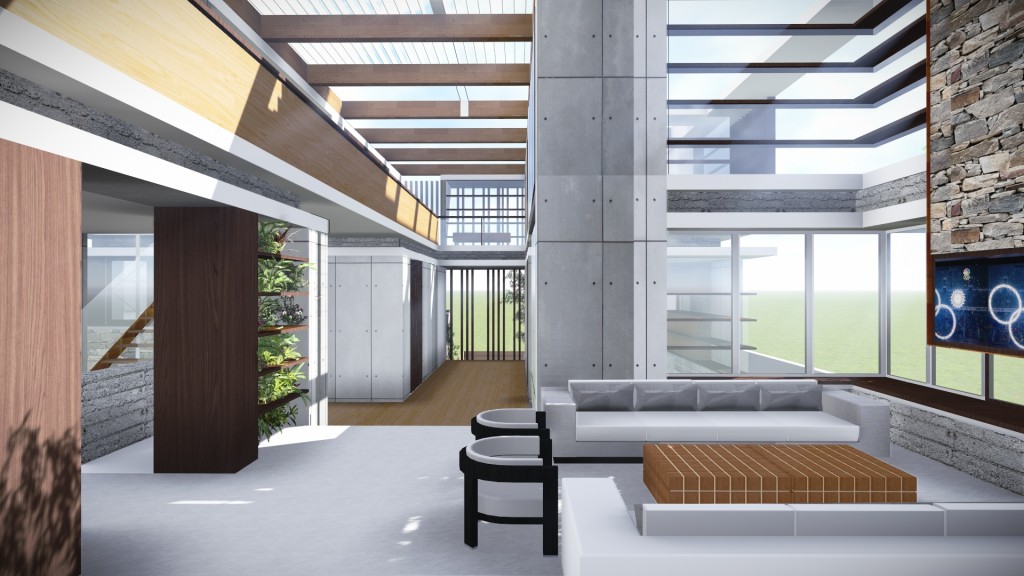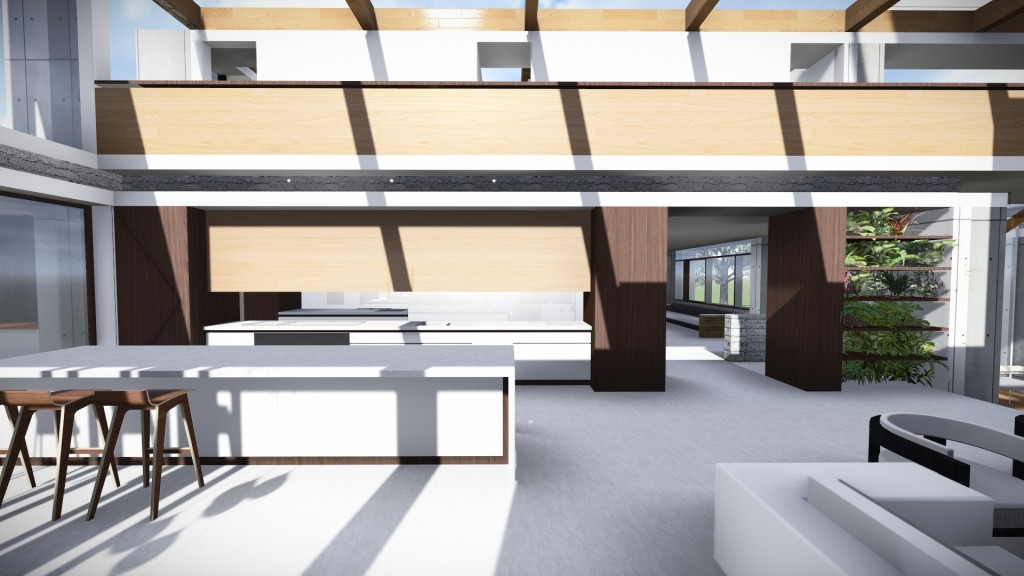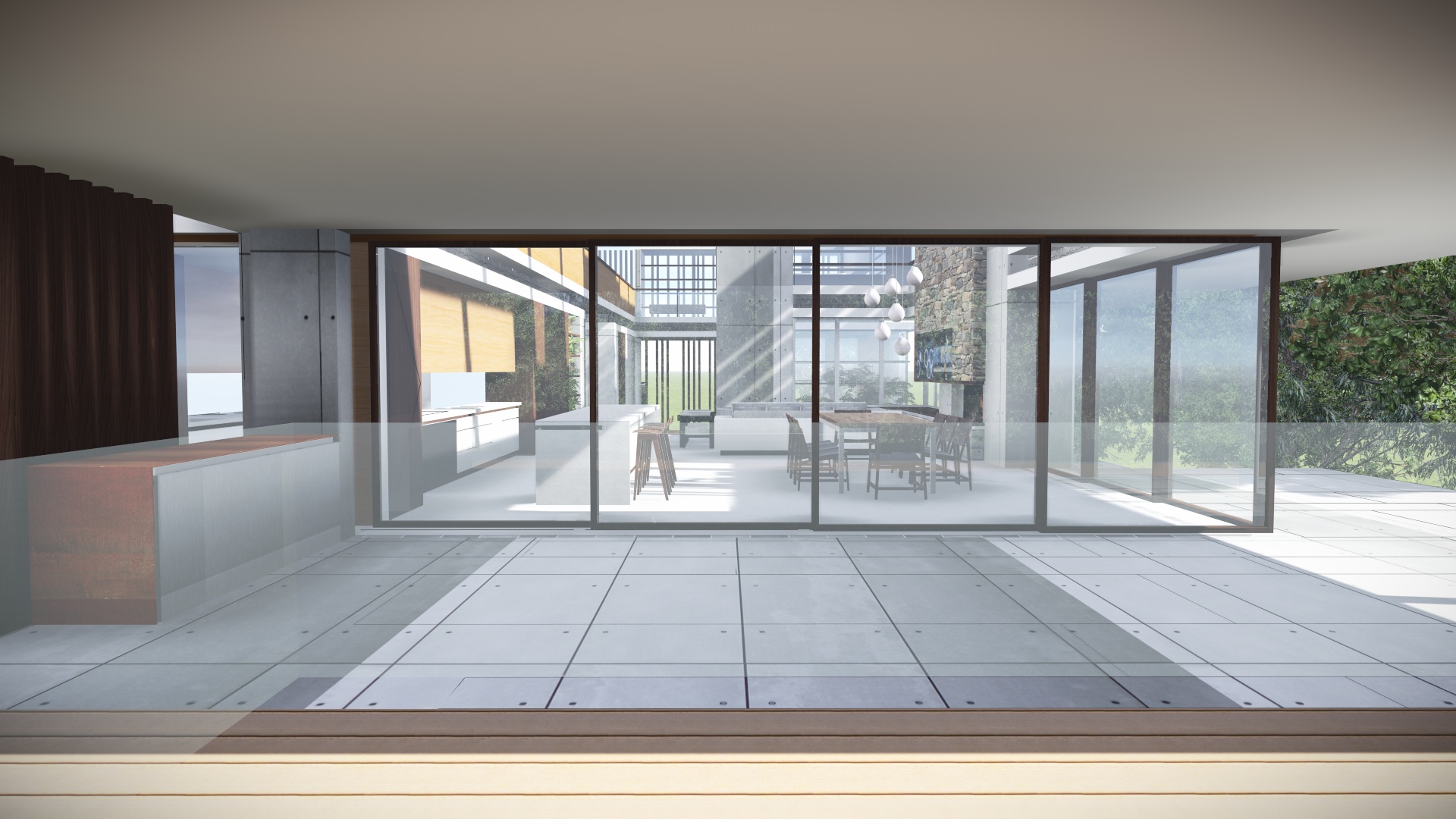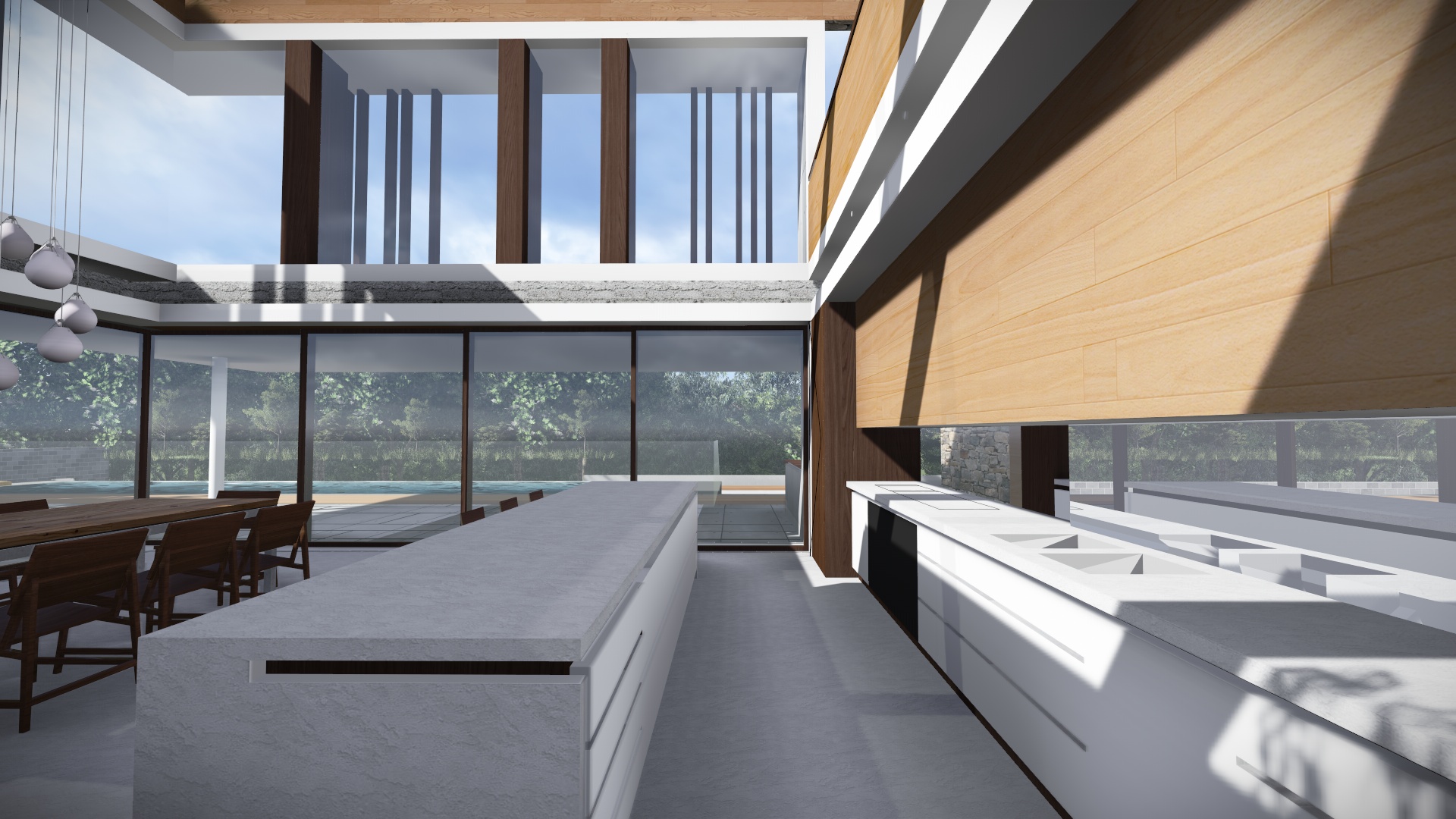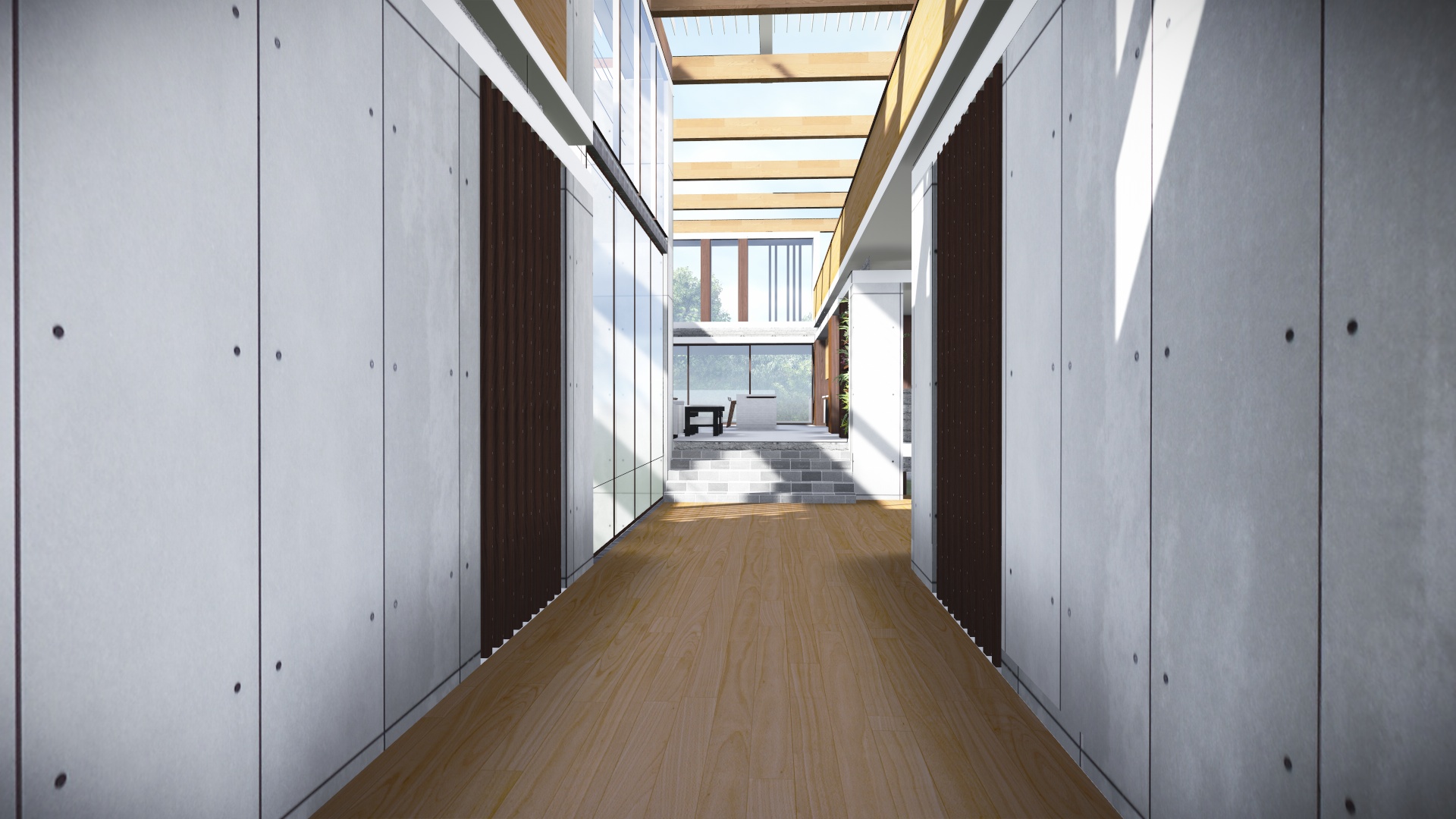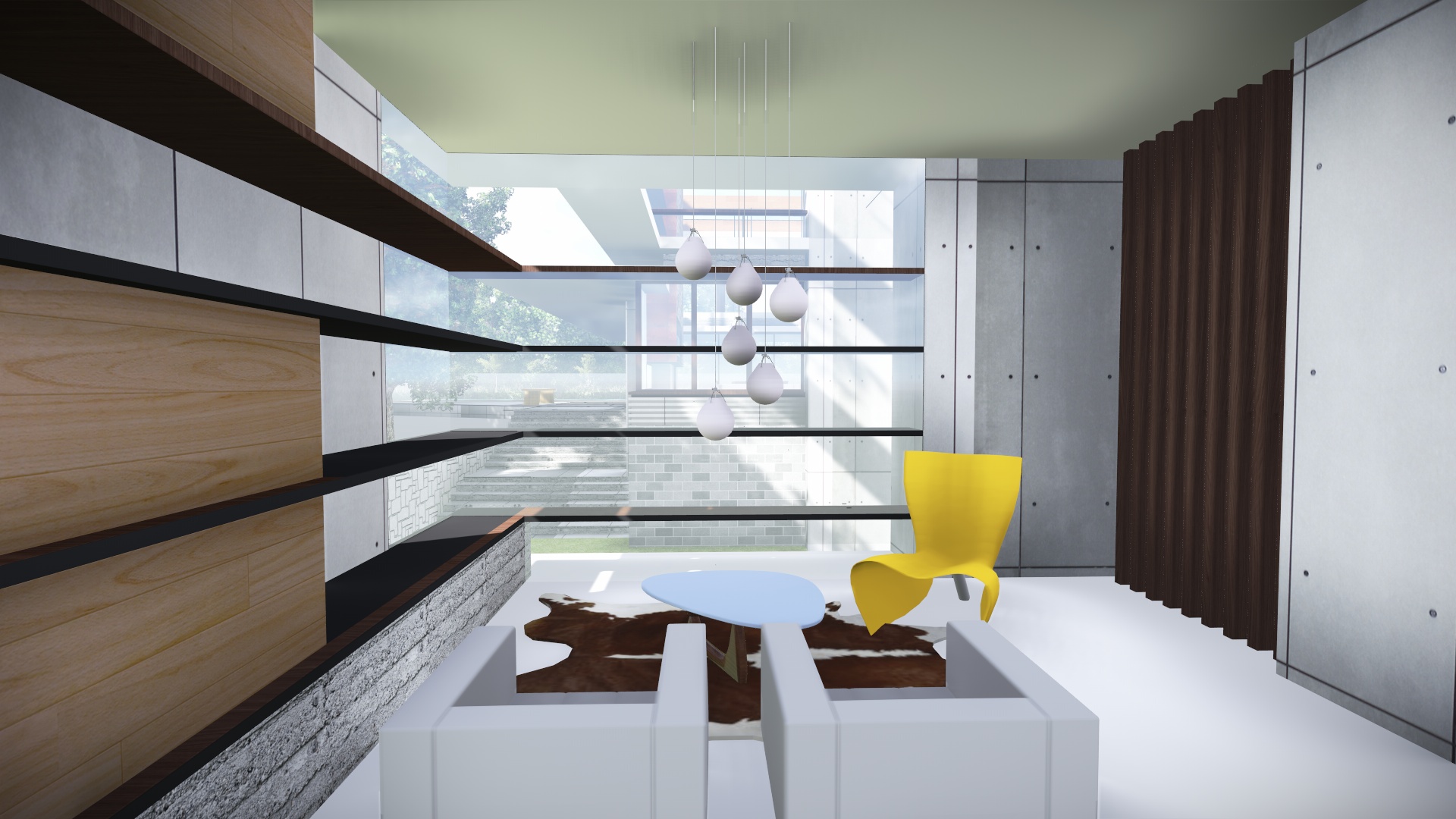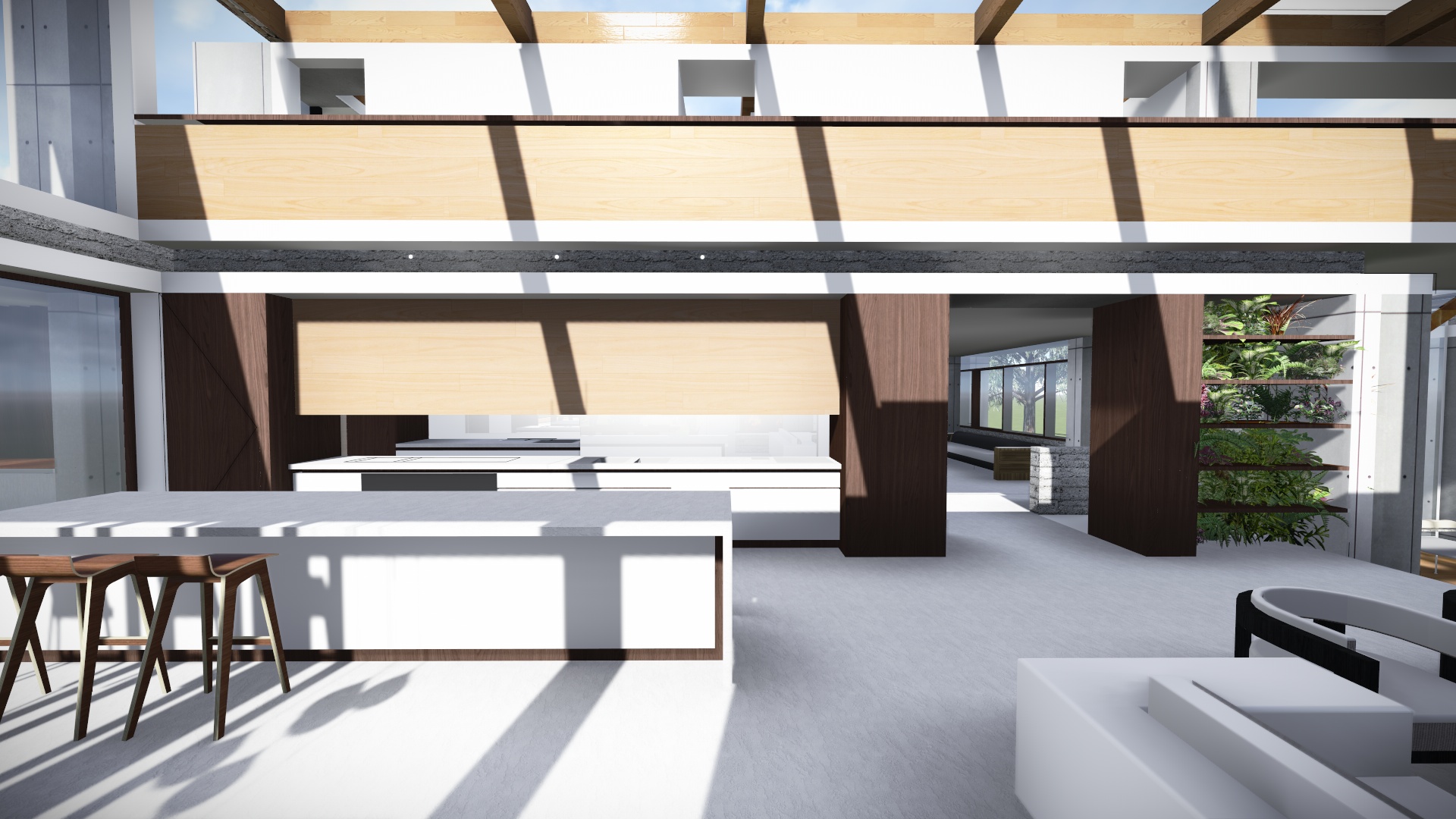The essential nature of a Queenslander House is derived from a unique combination of vital characteristics relevant to construction methods, availability of materials and affordability factors at the time. The Queenslander developed as an output of local workmanship techniques, inherent workability of the materials and its sub tropical environment, and in so doing it formed its own identity and purpose.
The sub tropical climate of Queensland allows for relative comfort most of the year without thermal or mechanical control. Shade, water and vegetation are the best ally against Queensland’s summer heat.
The T&T House design proposal responds in the same honest and straightforward way as the Queenslander to its environment and contemporary materials and workmanship. It relies on the same questions of performance and practicality, unique to its time of design and construction, in order to define a contextual response.
In being honest about its origins, it is hoped that the design will achieve the same timelessness of outcome, in that it is not derivative of any stylistic approach which will date and change as tastes shift, or compete with other designs for attention, it provides an honest, simple statement about what it is and how it works, that relates well with its neighbours and provides a friendly and approachable elevation to the street. It attempts to imply the same ‘ethics’ at work within the process of design and construction of the Queenslander, and in this sense it hopes to find a similar connection and celebration of place and with the people who inhabit and visit it.
This authenticity of purpose, a certain intractability within its time and place, carry its essential meaning as we dwell within its forms today, convey to us a sense of connection and identity that is unique to our place in the world. Its openness and honesty of construction might also convey to us a sense what it is we like about ourselves.
Perhaps the Author David Malouf describes it best:
‘they have about them the improvised air of tree houses. Airy, open, often with no doors between the rooms, they are on easy terms with breezes, with the thick foliage they break into at window level, with the lives of possums and flying foxes . . . living in them, for the most part, is like living in a reorganized forest. . .’

